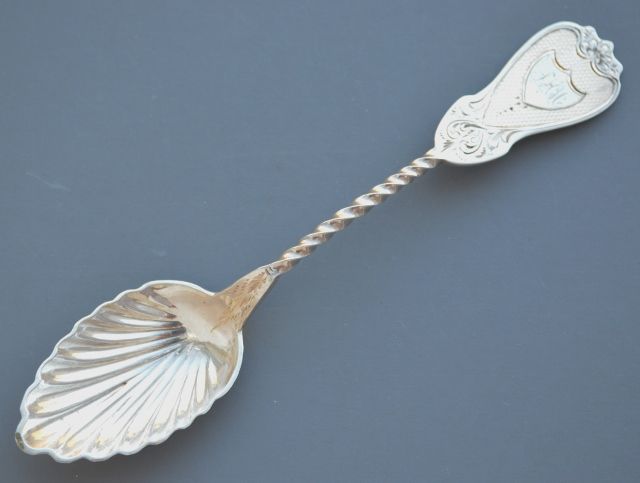Made a mental note to run through my references when I got a chance, looking to the very slim possibility of finding an attribution for the pattern, but that just doesn't seem likely to happen anytime soon - so some quick random thoughts...
The Cincinnati based Duhme or Oskamp strike me as less likely wholesalers for these spoons to Caldwell than Philadelphia based makers like Sharp or Watts, or perhaps New York based Gale or another east coast firm. Suppose there is the outside chance that Caldwell produced them in their own shop - despite being known as a retailer and Rainwater's noting that they dropped 'Manufacturer' from their advertising in 1860, ads and articles well into the 20th century show them claiming to be 'Silversmiths' and/or 'Makers', but hard to tell if that was actually true or just marketing.
Been a while since this was first posted, so not sure if
pmpadley will return, but will assume that since they posted it in 'Coin Silver', it's not marked 'Sterling', so along with the style, they most likely date to the 1860s.
A size is always helpful, but since the question of use as ice cream or fruit spoons was raised, would guess they're in the area of 5½-6½ inches, and a set of twelve would rule out serving pieces. Suspect that these are a bit early to have been offered as anything other than, as
Jag suggests, fancy teaspoons or perhaps, dessert spoons.
The picture of the spoon isn't particularly clear, but appears to show an engine-turned background - Figure 2 in this article on James Watts shows several similar 'twist engraved' handles with engine-turning:
The Flatware Patterns of James Watts
~Cheryl




